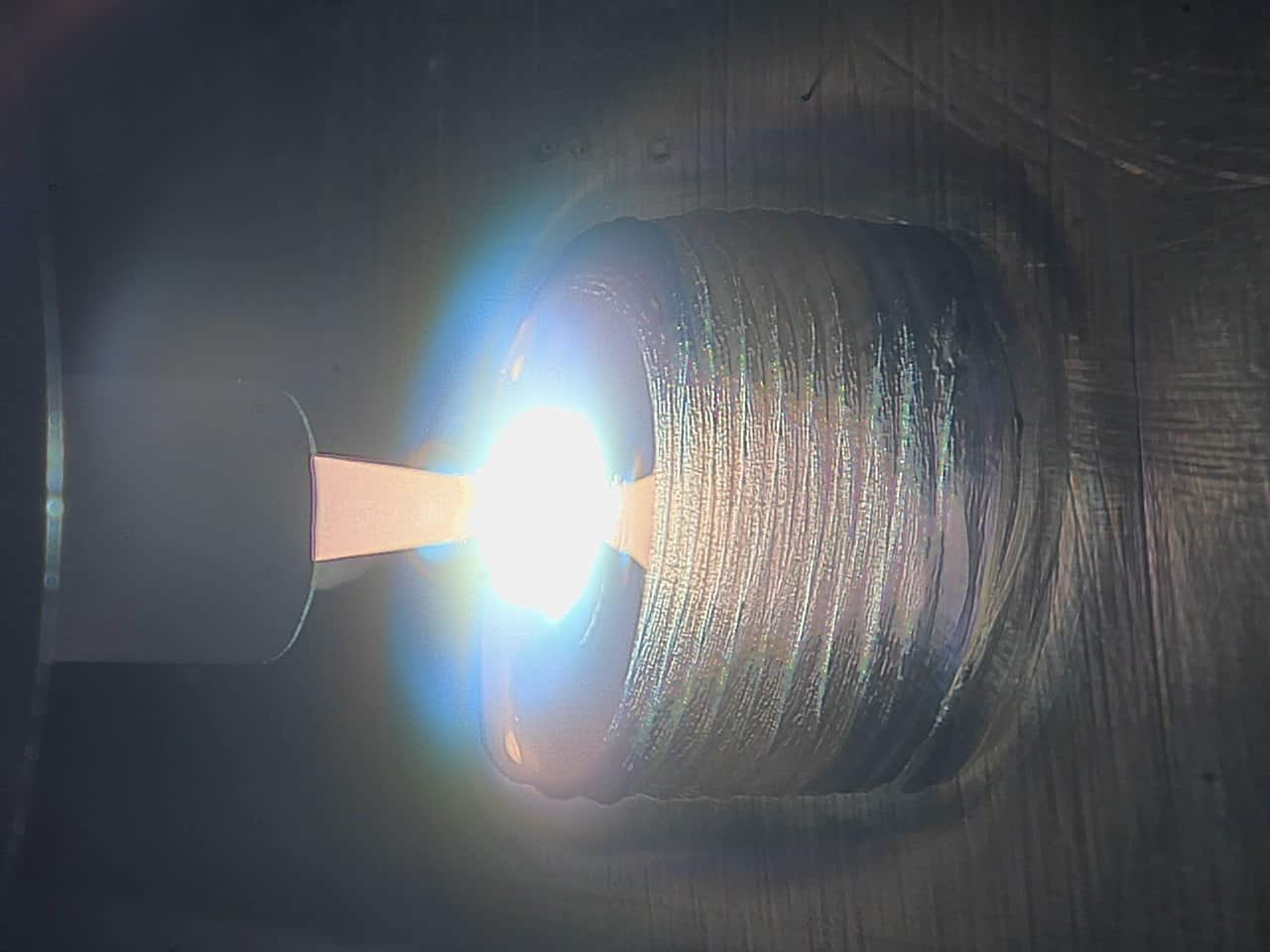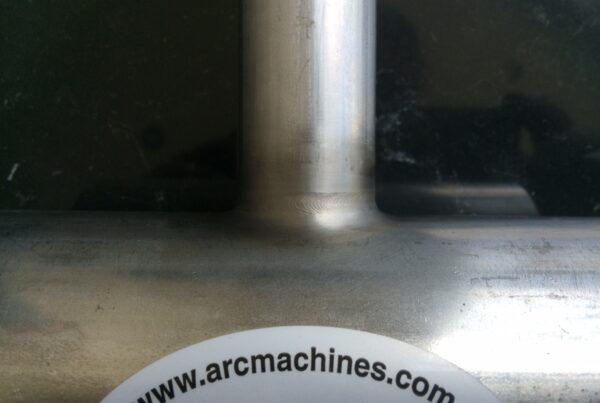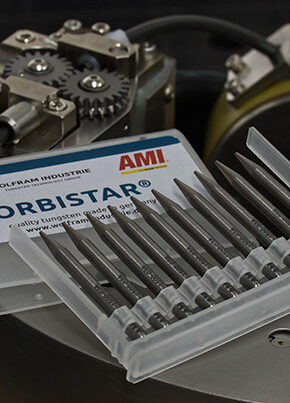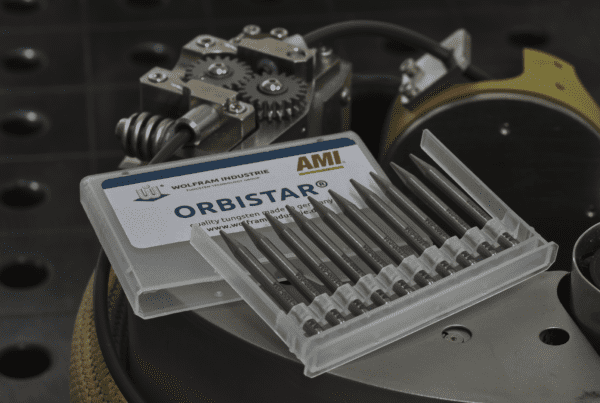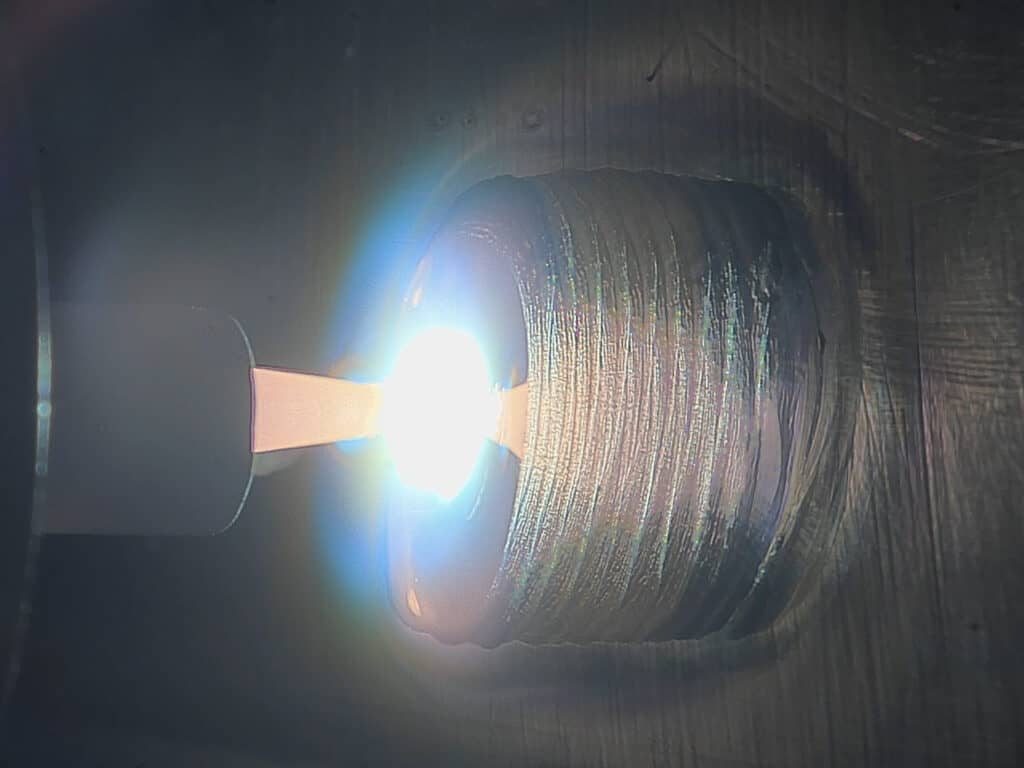
Tungsten is an ultra-dense metal with unique properties that make it ideal for everything from high-strength machine tools to punching holes in armored vehicles. Its most salient property in the field of welding is its ability to endure very high heat without degradation of its tensile strength. This lets it produce very pure and precisely formed welds. Its ability to maintain its form during intense heating also enables fine control over arc length and the area of heat effect.
These properties allow very controlled welds that meet high-end specifications and have made gas tungsten arc welding (GTAW) the process of choice for clean, precision welds. However, there are limits to tungsten’s ability to handle heat, and welding involves a complex interplay of heat, electrical resistance, and voltage. Choosing the correct diameter of a tungsten electrode entails balancing these factors against the specific characteristics of the base metal in order to meet specified welding parameters. This is especially important in applications dealing with exotic alloys or in very high-end welding where precision automated processes like orbital welding are used.
The Fundamentals of GTAW Arc Generation
The science behind electrical currents in welding is rather complex. There is not only amperage to consider, but also voltage and resistance. These interact to generate the heat which melts the metal in arc welding.
A rough overview of these three measures of electrical current follows below:
- Amperage: This is a measure of the flow of electrical current in amperes, which is the amount of charge carried past a point in a single second.
- Voltage: This is the measure of electrical pressure needed to overcome a level of resistance in order to generate amperage through a point past the resistor. In GTAW arc welding, the resistor is the tungsten electrode.
- Resistance: This is the measure of the level of impedance a volume of material poses to an electric current flowing through it.
These three factors are dynamic; amperage generates heat, and that heat, in turn, increases the resistance of the tungsten to the flow of current. Arc length, or the distance the tungsten is from the workpiece, also plays a role. The longer the distance, the greater the air gap, and the greater the resistance that needs to be overcome in order to generate an arc. Arc voltage correlates directly with arc length, as the longer the arc is, the more voltage is required to overcome the resistance. Greater resistance results in a larger percentage of electrical energy being transformed into heat energy.
The interaction between these three elements of an electrical current means that choosing the diameter of a tungsten electrode for GTAW welding may be a straightforward matter of matching the tungsten diameter with material thickness—at least when working with common materials and GTAW processes. In more demanding applications, it may require balancing material types, electrical current type, arc distances, tungsten alloying agents, and gases against each other to achieve a weld with the desired properties.
The Relationship Between Heat, Metal Type, and the Diameter of a Tungsten Electrode
At the most basic level, a thicker diameter tungsten electrode can absorb more heat than a thinner one. A thicker electrode offers more material for heat energy to be distributed through, which lessens the effects of the heat. The larger the diameter of a tungsten electrode, the higher the amperage that can be used in welding before the tungsten starts melting or begins losing tungsten into the weld, causing weld defects. The choice of tungsten electrode type for GTAW also plays a role. Alloying agents like lanthanum or cerium oxides can improve the electrode’s heat performance. Choosing a diameter for a tungsten electrode should take into account the base metal thickness, the type of metal, and the tungsten alloy being used. For example, the chart below shows amperage ranges along with the proper diameter of tungsten for welding stainless steel using argon shielding gas:
| Amperage | Tungsten Diameter | Current Type |
| 10-30 amps | 1 mm | DC Pulse |
| 20-80 amps | 1.6 mm | DC Pulse |
| 80-150 amps | 2.4 mm | DC Pulse |
| > 150 amps | 3.2 mm | DC Pulse |
These recommendations for amperage and tungsten diameter do not necessarily apply to metals other than stainless steel. For instance, welding Inconel® requires slightly higher amperage settings to generate the temperatures needed to bring the alloy to its melting point. Monel® has a high level of copper, which has a high heat conductivity. This requires higher amperage and may require the use of helium shielding gas rather than argon to keep the heat high and increase welding speed. Titanium must be welded using very high amperage (125 to 200 amps). Tungsten alloyed with cerium oxide is needed to handle these amperages and to generate the necessary heat. GTAW welding is more complicated than simply equating amperage with heat, and the choice of tungsten electrode diameter can be more complicated as a direct result.
In high-end and specific-to-purpose welding applications, such as those that make use of orbital welding, the diameter of a tungsten electrode should be chosen by an engineer or a metallurgist to achieve a weld with the desired properties. It should be chosen alongside the tungsten electrode type and the tungsten grind angle during the development of weld schedules and parameters by trained personnel who understand how these different elements interact.
Arc Machines, Inc. offers the machines and expert know-how needed for the development of high-specification GTAW orbital welding solutions. For inquiries regarding products, contact sales@arcmachines.com. For service inquiries, contact service@arcmachines.com. Arc Machines welcomes the opportunity to discuss your specific needs. Contact us to arrange a meeting.

